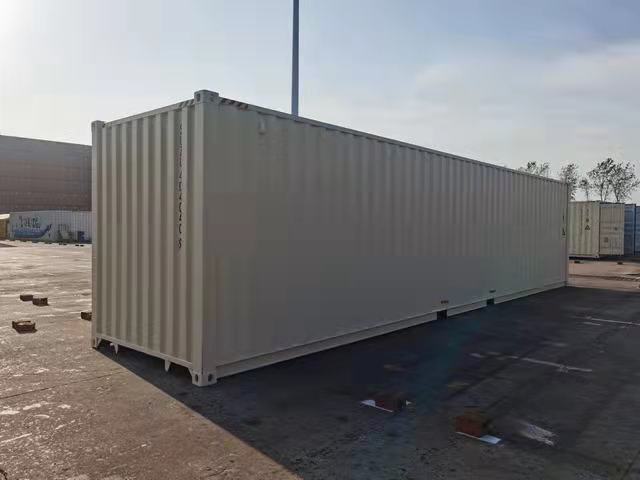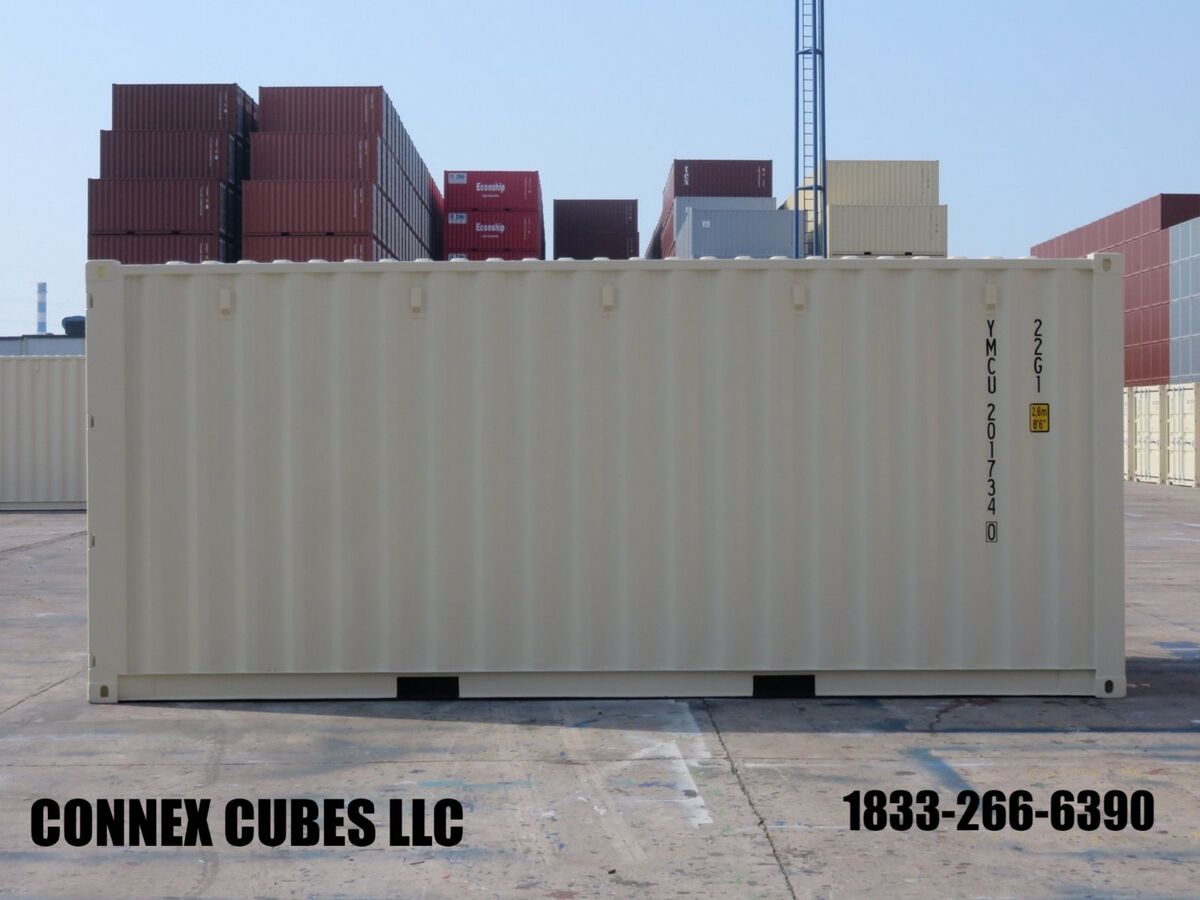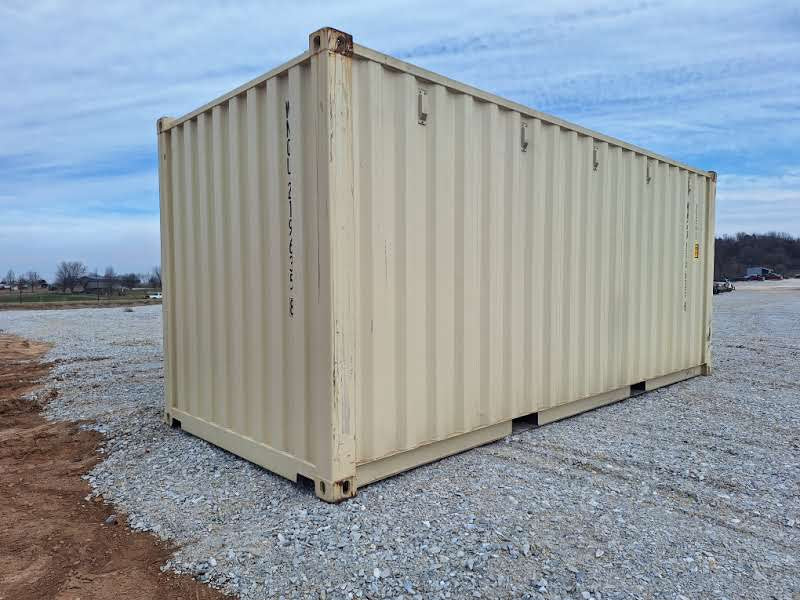How to Maximize Versatility with a New Shipping Container 40 x 8 x 9.6 in Your Next Project
How to Maximize Versatility with a New Shipping Container 40 x 8 x 9.6 in Your Next Project
Blog Article
The Ultimate Guide to Picking the Right Shipping Container for Your Demands
When it pertains to choosing the appropriate shipping container, recognizing your certain requirements is crucial. You'll intend to take into account elements like size, type, and product to assure you make the most effective selection. From common dimensions to specialized choices, there's a lot to check out. And also, budgeting for both the container and any modifications can make a huge distinction. Allow's break down the key elements to aid you discover the excellent suitable for your requirements.
Recognizing Shipping Container Sizes
When you're choosing a delivery container, recognizing the numerous sizes available is essential for making the appropriate decision. Delivering containers typically come in standard sizes of 20 and 40 feet, however you'll also discover other measurements. Recognizing the size you need depends on what you plan to store or transport.If you're moving smaller sized items, a 20-foot container could be perfect, while larger shipments usually require a 40-foot container. Bear in mind that the height can additionally vary; high cube containers provide added vertical space, which can be beneficial for taller goods - New Shipping Container 40' x 8' x 9’6".Before making a decision, gauge your cargo, and take into consideration just how much room you'll need for filling and unloading. Constantly consider prospective future demands-- selecting a somewhat larger container may conserve you headache down the line. Ultimately, choosing the right size will certainly boost performance and assure your things are protected during transportation
Sorts Of Delivery Containers Available
There are several kinds of delivery containers readily available, each designed for details objectives and cargo needs. The typical dry container is versatile, perfect for general cargo. If you're shipping subject to spoiling products, think about a cooled container, which preserves a controlled temperature level. For large things, high cube containers offer extra elevation, accommodating taller loads.If you need to transport heavy equipment or devices, flat shelf containers give a sturdy base without wall surfaces. Open-top containers permit for simple loading of high freight, with a detachable tarp covering for security. If you're trying to find versatility, think about a collapsible container that can be easily saved when not in use.Lastly, specialized containers like tank containers are used for liquids, while vented containers are developed for bulk cargo that needs ventilation. Knowing your cargo kind will certainly aid you choose the best container to fulfill your delivery needs efficiently.
Material Considerations for Toughness
When selecting a delivery container, the material plays an important role in its resilience. You'll intend to weigh the benefits of steel versus light weight aluminum, particularly regarding corrosion resistance. Recognizing these factors can help you make an extra informed choice for your shipping requires.
Steel vs. Light weight aluminum Containers
How do you choose between steel and aluminum containers for your delivery requires? Start by thinking about resilience. Steel containers are durable and offer superb strength, making them suitable for hefty loads and severe conditions. They stand up to damages from effects and are often less costly, which can be a major element for budget-conscious buyers.On the various other hand, light weight aluminum containers are lightweight, which can save you on shipping expenses. They're simpler to maneuver and are a terrific selection if you need to carry products frequently. Nevertheless, aluminum is typically more pricey and much less robust than steel. Consider your specific needs very carefully, including weight, expense, and the kind of freight you'll be delivery, to make the right selection for your situation.
Deterioration Resistance Aspects
Selecting the right product doesn't just involve weight and price; deterioration resistance plays a substantial role in durability. When picking a shipping container, take into consideration the setting it'll face. Steel containers, while strong, can rust if not properly treated. Search for options with safety coatings or galvanization to improve their life expectancy. Aluminum, on the other hand, offers natural rust resistance, making it ideal for coastal areas or moist conditions. However, it can be extra costly. Furthermore, examine the container's use-- if it'll be revealed to chemicals or severe weather, focus on materials that can endure these problems. Purchasing a corrosion-resistant container now can save you from pricey repair work or replacements down the line. Pick intelligently for lasting advantages.
Alterations and Modification Options
Shipping containers aren't just for transferring goods; they can be transformed to satisfy your details needs via various modifications and personalization options. You can convert a typical container into a relaxing workplace, a momentary retail store, or also an individual gym. The possibilities are almost endless.Think about adding windows, insulation, or ventilation to enhance comfort. You may likewise think about electric circuitry, plumbing, or perhaps custom shelving to enhance capability. If security's a worry, strengthened locks can supply peace of mind.For visual charm, you can repaint the container or add a distinct layout to make it stick out. Do not forget flooring choices-- whether you want long lasting plywood or something more sophisticated, it can elevate the space.Ultimately, tailoring your shipping container to match your needs can boost functionality and more helpful hints produce a special atmosphere that mirrors your style.
Evaluating Your Transport Demands
When it pertains to utilizing your customized delivery container, understanding your transport needs is vital. Begin by establishing what you'll be delivery-- whether it's heavy devices, retail products, or individual things. Each kind of freight has different requirements relating to size, weight, and accessibility.Next, consider the range and mode of transportation. Are you shipping locally, nationally, or globally? This influences the container's layout and capability. If you're using trucks, guarantee your container fits common measurements for easy loading and unloading.Additionally, think of transit problems. Will your things need special protection from weather condition or temperature variations? If so, you may need insulation or air flow functions in your container.Lastly, evaluate exactly how usually you'll be moving products. Frequent shipments may need an extra durable and flexible container to fulfill continuous demands. By resolving these variables, you'll be well-prepared to choose the right delivery container for your demands.
Budgeting for Your Shipping Container
Setting a budget plan for your delivery container is important for guaranteeing a smooth buying process. Initially, determine just how much you can pay for to invest. Rates can differ significantly based on dimension, problem, and kind. New containers typically cost more, but used ones can supply significant savings.Next, take into consideration any type of additional prices you may incur, such as transport fees, distribution fees, and alterations. If you prepare to tailor the container, consider those expenses as well. Research study different suppliers to contrast prices and find the most effective offer that fulfills your needs.Don' t neglect to include any licenses or policies that might put on your purchase and use the container. By plainly outlining your spending plan, you'll be much better prepared to make enlightened decisions, ensuring you get the appropriate container without damaging the financial institution.
Upkeep and Take Care Of Longevity
To assure your shipping container lasts for years, routine maintenance is key. Begin by inspecting the outside for rust, dents, and damages. If you spot any problems, resolve them immediately to avoid further wear and tear. Clean the container periodically, both within and out, to eliminate dirt, look these up debris, and moisture that can cause corrosion.Ensure the doors secure properly and lube the joints to prevent corrosion and sticking. If you're making use of the container for storage, take into consideration including air flow to reduce humidity and mold development. For extra defense, use a rust-inhibiting paint or sealer annually.If your container's situated in a rough environment, like seaside areas, you may need to enhance maintenance frequency. Keep an eye on the flooring, as well; any kind of indications of wear must be fixed today. With these easy steps, you'll extend the life of your shipping container substantially.
Regularly Asked Inquiries
Exactly how Do I Locate a Reputable Delivery Container Distributor?
To locate a trustworthy shipping container supplier, beginning by investigating online reviews, requesting for suggestions from buddies or market calls, and contrasting prices. Always check their credentials and assurance they offer high quality containers that fulfill your demands.

Can I Lease a Delivery Container Rather Than Acquiring?
Yes, you can absolutely rent out a delivery container rather of purchasing one. Lots of vendors supply rental alternatives, which can conserve you cash and provide adaptability if you just need it for a brief duration.
What Permits Are Required for Container Positioning?

Are Delivery Containers Weatherproof and Ideal for Outdoor Storage?
Yes, shipping containers are typically weatherproof, developed to stand up to rough conditions. Their durable construction maintains your things secure and dry, making them suitable for outside storage. Just guarantee proper ventilation to avoid wetness build-up inside.
Just how Do I Move a Delivery Container When Purchased?

Report this page